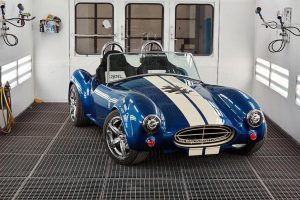Remarkable advances in additive manufacturing (AM) technologies, commonly known as 3d printing, over the past decade have helped to transform the prospective ways in which products are designed, developed, manufactured, and distributed. For the automotive industry, these advances have opened doors for newer designs; cleaner, lighter, and safer products; shorter lead times and lower costs. While automotive original equipment manufacturers (OEMs) and suppliers primarily use AM for rapid prototyping, the technical trajectory of AM makes a strong case for its use in product innovation and high-volume direct manufacturing in the future. 3d printing in automotive industry has revived it.
New developments in AM processes, along with related innovations in fields such as advanced materials, will benefit production within the automotive industry as well as alter traditional manufacturing and supply chain pathways. The very famous Shelby Cobra and Local Motors 3d printed car are two examples of the result of the advancement of 3d printing in automotive industry, which has paved a way to experience a notable transition that in the automotive industry.
How is 3d printing in automotive industry paving the way for new car designs?
This printing technology allows for rapid prototyping instead of relying on the traditional method of making a mold and manufacturing a part or hand-tooling a part. There are many advantages of using 3d printing instead of traditional manufacturing, not the least of which are lower costs and faster speeds. The method allows for on-demand tooling, and the parts are lighter and the fabrication process is much more environmentally friendly, requiring a fraction of the energy cost that is required in traditional manufacturing.
In the current landscape, cars are built on long assembly lines that consume staggering amounts of energy, which means even cars built to live an eco-friendly existence roll off the assembly line with a huge carbon footprint. Choosing 3D printing over traditional manufacturing in the automotive industry mainly includes two positive impacts: the exclusion of leftover waste and minimum generation of heat energy, which contributes to an eco-friendly method of processing.
Biggest contribution of 3d printing in Automotive Industry
3d printed Shelby Cobra

3d printed Shelby Cobra
Next-generation manufacturing takes on a 50-year-old icon as ORNL researchers transform this classic sports car into a 3d-printed laboratory on wheels. 3d printing enables the seamless integration of advanced technologies with design flexibility and modularity. It provides a platform for rapid development and evaluation. The 3d printed car incorporates “plug and plays” components such as new engine, battery, and fuel cell technologies; hybrid system designs; and power electronics and wireless charging systems, allowing researchers to easily and quickly test out innovative ideas in a driving laboratory.
Olli by local motors

Olli-3d printed car by local motors
Local Motors has created history by 3d printing its first Olli, self-driving shuttle in the company’s Knoxville micro-factory. Local Motors has long been innovating the future of vehicle 3d printing. And, Olli is believed to be the only 3d printed transit vehicle on Earth.


